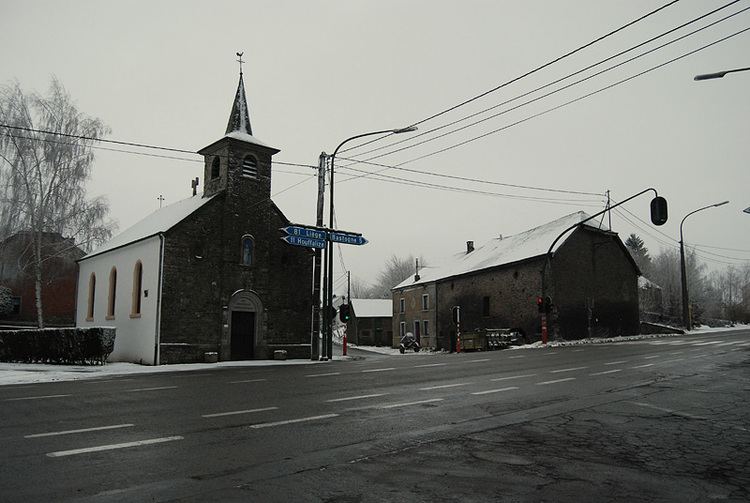Community French Community Area codes 061 Postal code 6600 Area code 061 | Postal codes 6600 Local time Wednesday 11:14 PM Municipality Bastogne | |
 | ||
Weather 6°C, Wind NE at 8 km/h, 86% Humidity Arrondissement Arrondissement of Bastogne | ||
Foy ([foj]) is a village in Belgium, near Bastogne.
Contents
Map of 6600 Foy, Belgium
Background
Foy is in the Ardennes Forest region, an area of more than 11,000 square kilometers. It is largely in what today is Wallonia, the Walloons French-speaking area of southern Belgium, but it extends into France, Germany, and Luxembourg. The American 101st Airborne Division held the Bois Jacques (Jacques Woods), part of the Ardennes Forest, just outside Foy and up a slight rise toward Bastogne.
Battle of the Bulge
In World War II, Foy was heavily occupied by German forces during the Battle of the Bulge. The U.S. 101st Airborne Division held the Bois Jacques just outside town. After being relieved by General George S. Patton's U.S. Third Army, the 101st retook the town. The assault, spearheaded by Easy Company, part of the 2nd Battalion, 506th Parachute Infantry Regiment, was depicted in the HBO mini-series Band of Brothers.
Battle of Foy
Foy was a small village occupied by the Germans in the early stages of the Battle of the Bulge. It is 4 kilometers to the north of Bastogne on the road to Houffalize.
The 101st Airborne Division held the Bois Jacques or Jacques Woods, up a slight rise outside Foy. Stephen Ambrose's book Band of Brothers describes how Easy Company of the 2nd Battalion, 506th Parachute Infantry led the assault to capture the town in January, 1945. The 506th, including Easy Company, initially commanded by First lieutenant Norman Dike, attacked Foy. They lost several men in the initial charge. During the January 1945 assault, which included Easy Company, Dike had ordered a platoon to go on a flanking mission around the rear of the town.
In one account of the attack, Dike ordered the company to take cover after coming under fire. With the unit unable to proceed, his subordinates informed him they were going to get killed because they were sitting ducks. At the same time, Captain Richard Winters, former commander of Easy Company and now the 2nd Battalion's Executive Officer, tried radioing him to tell him to move his men. Having no idea how to control the situation, Dike froze. As Carwood Lipton, at that time the company's first sergeant, later put it: "He fell apart."
In another account, Dike stopped because he had been wounded in the right shoulder, not because he had panicked. Clancy Lyall saw the wound.
Dike was immediately relieved by First lieutenant Ronald C. Speirs under orders from Captain Winters. However, they were still able to take the town despite the losses.
The company captured several German prisoners. A remaining, hidden German sniper killed a few of the men after the assault but was quickly discovered and neutralized. Today, there is a German cemetery west of Foy with graves of at least 6,804 men, some of them in mass graves.
A monument to the American paratroopers was built in 2004 at the edge of the Bois Jacques, south of Foy.
Canadian role
On January 2, 1945, the 1st Canadian Parachute Battalion was assigned to patrolling duties and to aid defense. It took part in the general advance passing the towns of Aye, Marche, Foy and Bande, with its participation ended after the Allies captured Bande. During the operation, the unit sustained a few casualties in active combat. This was the only Canadian unit to take part in the Ardennes offensive. The role of the Canadians was small compared to that of the Americans, acting as more of a substitute for the 101st when that unit was called elsewhere.
